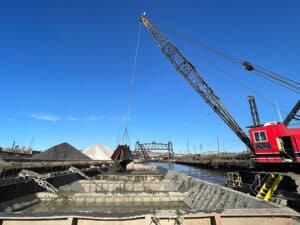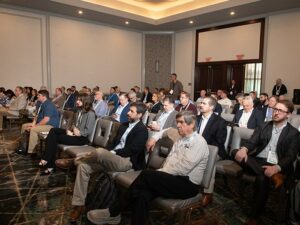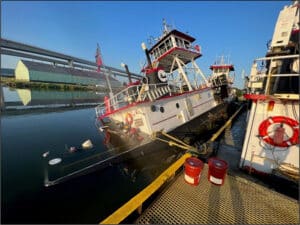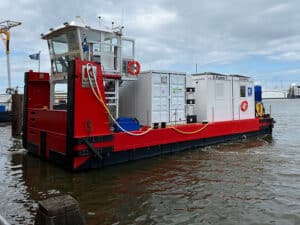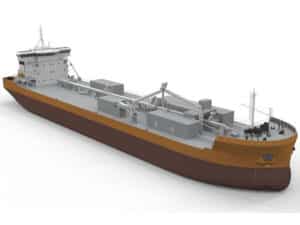
Infrastructure Act: Good news for ports, wind and waterways
Written by Nick Blenkey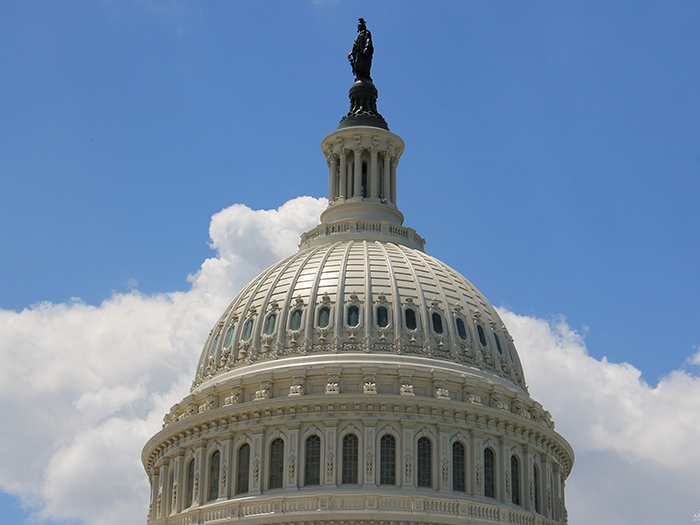
Image: Architect of the Capitol
H.R. 3684, the Infrastructure Investment and Jobs Act, on Friday passed the House by a vote of 228 to 206. The measure had already passed the Senate and now awaits President Biden’s signature. Passage of the bill is good news for ports, waterways and offshore wind, providing $17.4 billion in funding for waterway and coastal infrastructure, inland waterway improvements, and port infrastructure.
WATERWAYS
For the U.S. inland waterways system, reports the Waterways Council, Inc. (WCI),, a historic $2.5 billion of 100% federal funding is provided for construction and major rehabilitation inland waterways projects. Capital Investment Strategy (CIS) navigation projects will be given priority.
“When $2.5 billion is coupled with annual appropriations over the next five years, two-thirds of the CIS portfolio could potentially be funded to completion,” says WCI. “This provides a once-in-a-generation opportunity to modernize the nation’s inland waterways transportation system to provide energy security, increase global competitiveness, and further improve our environmental footprint.”
WCI notes that project-specific funding will be allocated in a detailed spending plan by the U.S. Army Corps of Engineers’ Chief of Engineers and must be submitted to the House and Senate not later than 60 days after enactment. Starting not later than 120 days after enactment of the bill, the Chief of Engineers is required toprovide a monthly report to the Committees on Appropriations of the House of Representatives and the Senate, detailing the allocation and obligation of funds, and new construction projects selected to be initiated.
Additionally, the Corps’ Operations and Maintenance account for all business line items within its Civil Works mission will receive $4 billion in the infrastructure bill. Inland waterways projects and dredging are eligible to compete for funding to be allocated in a Corps spend plan.
OFFSHORE WIND
The bill provides $450 million per year for 5 years for the Department of Transportation’s Port Infrastructure Development Program (PIDP), which is good news for offshore wind.
“The bipartisan infrastructure deal is a milestone that will support the ascendant American offshore wind opportunity,” said National Ocean Industries Association President Erik Milito. “NOIA strongly advocated for infrastructure funding levels that would provide meaningful support for U.S. ports. Our ports are the gateway to our nation’s offshore wind opportunity. Access to the capital will help ports invest and improve their operational capabilities in support of American offshore wind and the generational opportunity it provides.”
“The broader infrastructure provisions will modernize the nation’s foundational infrastructure that includes roads, bridges, freight and rail, water, and information technology, providing benefits to all sectors of the economy,” noted Milito. “The legislation also advances climate related efforts through coastal resiliency funding, low and zero carbon transportation commitments, and continued funding for bipartisan programs supporting large scale carbon capture, direct air capture, and wind energy projects.”
“Developing our ports and other infrastructure will help the U.S. maximize the economic and environmental benefits from offshore energy, specifically offshore wind.”
Meantime, Liz Burdock, CEO and President of the Business Network for Offshore Wind, hailed passage of the infrastructure package, but noted that another Biden Administration priority, the Build Back Better Act, that has yet to be passed. Proposing the single largest invest ever in clean energy it contains several provisions that directly impact the offshore wind industry.
“Achieving the ambitious offshore wind goals set by the Biden Administration requires accelerating the development of a local supply chain as explosive growth in global markets draws investors’ attention away from the American market,” said Burdock. “In the Bipartisan Infrastructure and Build Back Better legislation, Congress has shown that it is serious about advancing offshore wind and supporting the development of a U.S. supply chain that will fuel job growth in communities all around the nation. While passage of the Bipartisan Infrastructure bill makes needed investments in our energy grid, ports, and research institutes, Congress must take the next step and pass the Build Back Better package, which includes mission critical investments in U.S. manufacturing and component development, further port investment and expanded transmission funding. All elements are critical for the full deployment of offshore wind in the U.S.”
CONGRESS MUST FINISH THE JOB
“To create a local supply chain that will grow jobs and compete on the global stage, Congress must finish the job,” said Burdock.
Today, President Biden called the Infrastructure Investment and Jobs Act “a once-in-generation bipartisan infrastructure bill that will create millions of jobs, turn the climate crisis into an opportunity, and put us on a path to win the economic competition for the 21st Century.”
“I’m also proud that a rule was voted on that will allow for passage of my Build Back Better Act in the House of Representatives the week of November 15,” he noted and said “I look forward to signing both of these bills into law.
- Read the White House Fact Sheet on the Infrastructure Investment and Jobs Act.

